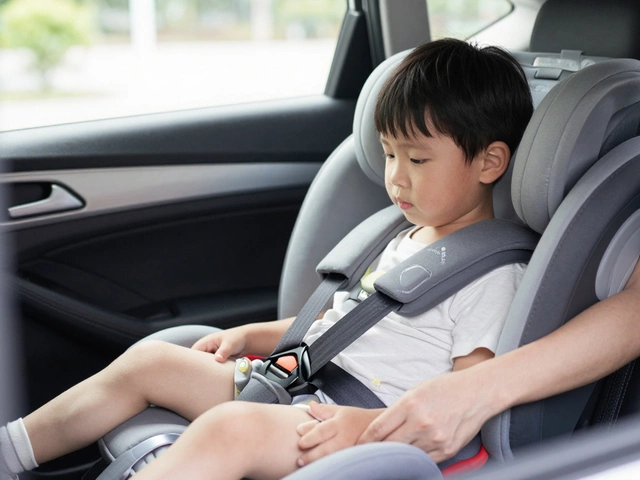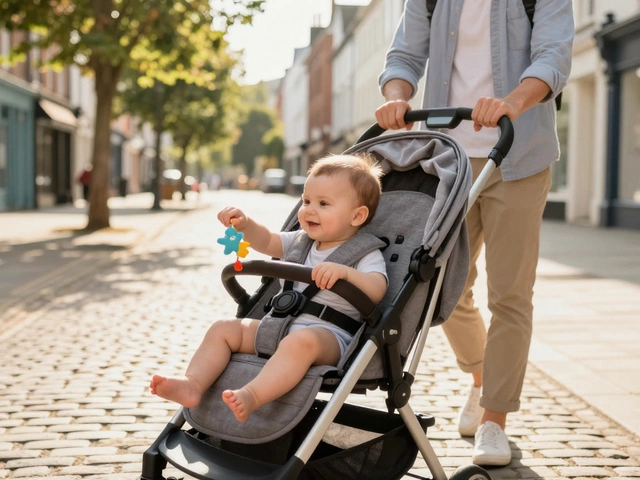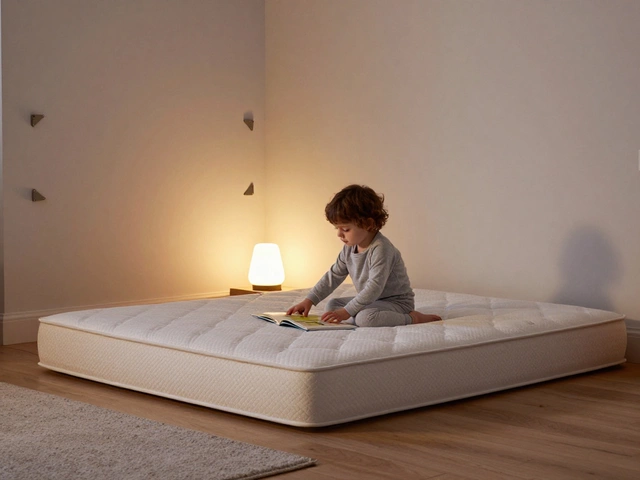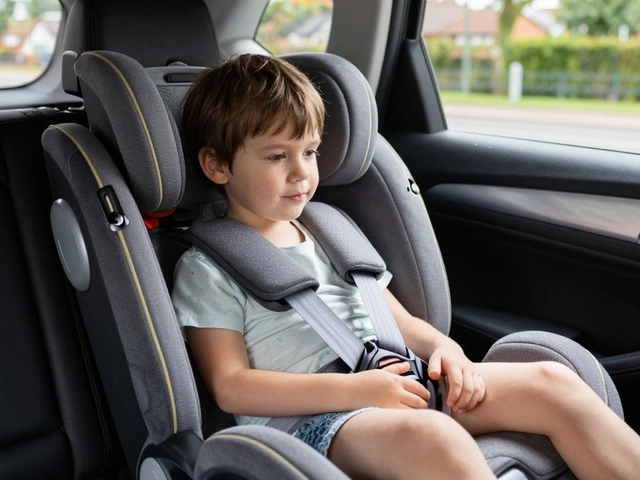
Nothing scares a new parent more than the thought of their baby quietly struggling to breathe. Suffocating baby syndrome is serious, and sometimes it’s directly tied to how a baby is placed in a carrier. The way their tiny heads tip, the way their bodies curl—sometimes these little details make all the difference.
Most parents use baby carriers for the closeness and convenience, not realizing that some common habits can actually put a baby at risk. For example, when a baby’s chin drops to their chest, their airway can get pinched, making it hard for them to breathe. It can all happen so silently, you might not notice until it’s too late.
- What is Suffocating Baby Syndrome Exactly?
- How Baby Carriers Play a Role
- Spotting Trouble: Warning Signs Parents Miss
- Smart Rules for Safe Carrying
What is Suffocating Baby Syndrome Exactly?
Suffocating baby syndrome is when a young baby’s airway gets blocked and they can’t get enough oxygen. Most cases show up in babies under four months because their muscles aren’t strong enough to hold their heads up for long, and their airways are tiny. If the baby’s nose or mouth is pressed up against fabric, a parent’s chest, or their own chest, they can start to suffocate in just a couple minutes. The scary part is, they rarely make any noise because they’re too weak to fight it or cry out for help.
Doctors use the term “positional asphyxia” when talking about these kinds of suffocation: it means the baby’s position makes it hard or impossible for them to breathe. Health organizations warn parents that even a little tilt—the chin pressed down or the face covered—can lead to trouble. You might hear about suffocating baby syndrome most often in connection with unsafe sleep setups, but baby carriers are another place parents need to pay attention.
- Babies under 4 months are most at risk.
- It can happen faster than you think, often in just a few minutes.
- It’s often silent—babies can’t always cry or shift to fix their position.
- The airway gets blocked when the chin is pressed to the chest or the face is covered.
A study from the American Academy of Pediatrics looked at 14 years of infant safety reports and found that soft carriers and slings were involved in over 60% of cases where airway obstruction happened. The numbers show this isn’t just a rare fluke—parents need real awareness for babywearing risk every single time they use a carrier.
How Baby Carriers Play a Role
Some parents think any baby carrier is safe if their baby looks fine and isn’t crying. That’s not always true. Suffocating baby syndrome can happen in just a few minutes, especially if your baby’s nose or mouth ends up pressed against fabric, your body, or even their own chest. Slings and soft-structured carriers get a bad rap here, especially when babies are under four months old and can’t yet control their head or neck on their own.
Here’s where the trouble starts: If your baby slumps down so their chin touches their chest, that tiny airway gets squeezed. It’s not obvious, but they suddenly struggle for every breath. Carriers that let your baby curl into a C-shape are a bigger risk, and loose fitting carriers or slings make it easy for them to end up in this dangerous position. Even the American Academy of Pediatrics says the wrong carrier position is a common cause of blocked airways in infants.
- Carriers with little head and neck support raise the risk of infant safety issues.
- If the carrier lets your baby’s face disappear into fabric or your chest, their breathing can get blocked fast.
- Babies who are premature or have breathing issues are at much higher risk and need extra care.
One study from 2023 looked at ER visits linked to baby carriers and found that eight out of ten cases of suffocating baby syndrome happened because babies’ heads slumped or faces got covered. That’s not just a fluke—it’s a pattern. The right kind of carrier, combined with a little know-how, can make a massive difference.
| Carrier Type | Common Issues |
|---|---|
| Slings | Easy for baby to curl up, makes face visibility tough |
| Soft Structured | Needs good adjustment, may lack neck support |
| Wraps | Too loose or too tight causes airway problems |
Always remember the golden rule: Keep your baby’s nose and mouth clear, and never let their chin rest on their chest. Baby carriers are awesome, but only if you use them right.

Spotting Trouble: Warning Signs Parents Miss
It’s scary how easily warning signs slip past tired eyes. Babies can’t tell you if they’re having trouble breathing, so you’ve got to know exactly what to look for. Most cases of suffocating baby syndrome in baby carriers come down to small changes you could miss in seconds.
Here’s what should always grab your attention:
- Chin Tucked to Chest: This is a huge red flag. If your baby’s chin is touching or even close to their chest, their airway can get squeezed shut. Their neck should be straight, with their face visible.
- Face Pressed Into Fabric or the Adult: If their nose or mouth is covered by your chest, carrier fabric, or even their own arm, air can’t get in. Their whole face needs to stay clear.
- Unusual Sounds or Silence: Listen for any grunting, whistling, or faint wheezing. Worse: sudden silence when your baby’s usually noisy. It could mean they’re struggling quietly.
- Color Changes: Blue lips, pale skin, or blotchiness mean your baby isn’t getting enough oxygen. Also, watch for sweating without any obvious reason.
- Limpness or Weak Movements: Babies who suddenly go floppy or stop moving aren’t just tired. This can mean they’re in distress and need help now.
Doctors point out that most healthy babies breathe around 40 times a minute. If you notice slow, shallow breaths, or your baby takes long pauses between breaths, that’s another warning sign something’s wrong.
| Warning Sign | What to Do |
|---|---|
| Chin on chest | Lift and reposition their head |
| Face covered | Uncover immediately, ensure airflow |
| Blue or pale lips | Take baby out of carrier and check breathing |
| Limp or unresponsive | Call emergency services |
Don’t count on fancy features or thick padding to alert you to problems. The most important thing is you noticing these signs early. If something feels off, trust your gut and check your baby right away. No carrier convenience is worth missing a subtle warning that your baby’s in trouble.
Smart Rules for Safe Carrying
Staying safe while using baby carriers isn’t complicated, but it definitely takes paying attention. Experts repeat one key thing: it’s all about your baby’s position. A squished chin, hidden face, or slouchy back can all make it tough for your baby to breathe. So if you follow a few basic rules every single time, you massively lower the risk of suffocating baby syndrome.
- Keep the face visible: Your baby's nose and mouth should never be covered—not by fabric, slings, or their own chest. If you can’t see your baby’s face at a glance, fix their position.
- Mouth and nose clear of obstructions: Scarves, zippers, your own clothes, or loose hoods can accidentally block your baby’s airway. It sounds obvious, but it happens a lot.
- Chin up, not slouched: Always check for space between their chin and chest—about two finger-widths of space helps keep their airway open.
- Tight, but not too tight: Snug support is good; being mushed against you isn’t. Their body shouldn’t fold over itself or slump sideways.
- Don’t cover their head completely: As tempting as it is in cold weather, don’t block all airflow.
Safe positioning even has a memory trick: the "T.I.C.K.S." rule, straight from safety boards in the UK and US. Here’s what it stands for:
- Tight: Carrier should hug your baby close, but not restrict breathing.
- In view at all times: You should see your baby’s face without moving the fabric.
- Close enough to kiss: You should be able to kiss the top of your baby’s head just by tipping your head forward.
- Keep chin off the chest: To prevent airway blockages.
- Supported back: Baby’s back should be straight and supported, not curled.
Parents get it wrong for all sorts of reasons—hurrying out the door, trying to multitask, or not knowing how the carrier works. A 2022 survey from Safe Kids Worldwide asked 1,000 parents about baby carrier habits. Turns out, nearly 60% never checked their baby’s airway after adjusting the carrier. That’s a big warning.
| Common Carrier Mistakes | Risk Level |
|---|---|
| Face pressed against fabric or parent | High |
| Baby slumped or chin to chest | Very High |
| Loose/sloppy fit | Medium |
| Obstructed mouth/nose (by scarf, jacket, etc.) | High |
Quick tip—do a head-to-toe check each time you put your baby in the baby carrier. Is their head upright? Airway clear? Legs in a comfortable "M" shape? Don’t rely on a single glance—double check, especially if you move or bend over.
Finally, always follow your carrier’s manual. If it didn't come with one, trustworthy brands usually offer video tutorials online. Double checking never hurt anyone, but skipping these steps can be risky for your little one. Safety first, always—your baby’s breathing depends on it.






